Curated OER
Introduction to Plates, Axles, and Gears
Pupils are introduced to the function and design of the following Lego pieces: beams, bricks, plates, axles, tires, hubs and bushings. They then work with a partner to build something using only these pieces.
Curated OER
3-D Beginning Graphs
Students explore the concept of big and small. They collect objects from the classroom, sort them by size, and create a graph using Duplo stacking blocks.
Curated OER
Circle, Secants
Students identify the secant segment of a circle. In this geometry lesson, students investigate secant lines formed outside the circle. They use Cabri software to create drawings and explore circles and secants.
Curated OER
Product of Chord Segments
Students creating chords intersection using circles. In this geometry lesson, students create visuals of chords ad their properties using Cabri technology. They measure the chords and explore the relationship among chords.
Curated OER
The Search for Pythagoras' Treasure
Students identify and define properties of triangles. In this geometry instructional activity, students identify the missing sides and angles of right triangles. They use the rules of the Pythagorean Theorem to solve their problems.
Curated OER
Incredible Edible Bridges
Learners create a bridge using engineering and geometric concepts. In this geometry lesson, students identify the missing measures of polygons sides and angles. They work together to solve real life situation using problem solving...
Curated OER
Play Dough Day
Twelfth graders build a model of the following figures with the base from column I and the cross-section from column II. Draw the base with labeled axes on the graph paper and construct the figure on top of the base with the play dough...
Curated OER
Identifying Lines of Symmetry
Students calculate the lines of symmetry using polygons. In this geometry lesson, students graph, compare and estimate using collected data. They identify different attributes to the polygons based on their sides.
Curated OER
Sled Kites and Trigonometry
Students study the history of kites and their fundamental properties. In this kites lesson students divide into teams and build and fly kites.
Curated OER
Visual Patterns in Tessellations
Students explore tessellations as well as various types of polygon. Students examine tessellating patterns in the world around them. Students examine tessellations by creating their own tessellations and completing the included worksheet.
Curated OER
Introduction to Fractals: Infinity, Self-Similarity and Recursion
High schoolers think about several of the concepts from fractals, including recursion and self similarity. They use mathematical concepts of line segments, perimeter, area and infinity are used, and skill at pattern recognition is...
Curated OER
Secant Line Approximation of the Tangent Line
Students perform operation with secant and tangent lines. In this calculus lesson, students find the derivative and relate it to the slope of a line. They differentiate between secant and tangent as they intersect a circle, using Cabri.
Curated OER
Arc Measurement Based on The Measurement of a Central Angle
Students define keywords that are important to solve problems. In this geometry lesson, students find the arc length and angle of a circle. They convert between radians and degrees.
Curated OER
Out and About-Creating Design
Students demonstrate the elements of design by creating a digital photography portfolio of photos taken in and arond the scool. The edit photos using Photoshope to emphasize the element of desing in each phot.
Curated OER
The Minimal Distance Point from the Vertices of a Triangle
Pupils calculate the distance from the vertex of a triangle to the center. In this geometry lesson, students find the shortest distance between a point and the vertex of a triangle. They relate this concept of distance to the real world.
Curated OER
Area of Triangle using the Semi-Perimeter and Radius
Young scholars investigate the properties of circles. In this geometry lesson, students calculate the area and perimeter of a triangle. They identify the perimeter and radius length of a circle.
Curated OER
Inscribed Right Triangles
Young scholars calculate the measurements of the inscribed angles of a triangle. In this geometry lesson, students relate the hypotenuse of a right triangle and the diameter of a circle to each other. They calculate the diameter of a...
Curated OER
Equilateral Triangles
Students examine the attribute of equilateral triangles. In this equilateral triangle lesson, students examine a number of paper triangles to determine how they are classified. They determine how triangles are depicted in Navajo rugs.
Curated OER
Translations
Students explore the concept of translations. In this translations lesson plan, students discuss similarities and differences between images and pre-images. Students apply translations to coordinates of figures. Students use patty paper...
Curated OER
Look at It from the Right Angle
Students investigate how geometry can be used in the field of fitness and physical performance. They view a video that demonstrates how doctors and therapists mention geometry as they treat sports-related injuries.
Math Is Fun
Math Is Fun: Regular 2 D Shapes
This tutorial provides illustrations for regular 2-D shapes as well as a definition for polygons and for regular polygons.
ClassFlow
Class Flow: Two Dimensional Shapes Identify and Match
[Free Registration/Login Required] This flipchart helps students to analyze and compare various two-dimensional shapes according to the vertices, sides and parallel lines. It features "containers" created in Version 3 (can be used with...
PBS
Pbs Mathline Lesson: Geometry, It's a Perfect Fit [Pdf]
This two-part geometry lesson plan has students identify, describe, and classify two-dimensional shapes. Students engage in hands-on activities including identifying shapes in the classroom, creating patterns with shapes, identifying...
Khan Academy
Khan Academy: Symmetry of 2 D Shapes
Analyze various shapes according to their reflective and rotational symmetries. Students receive immediate feedback and have the opportunity to try questions repeatedly, watch a video or receive hints.

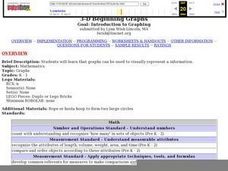

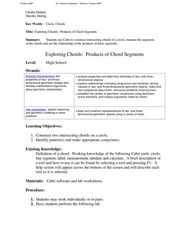




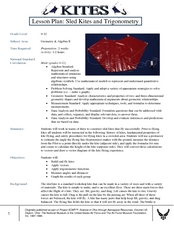
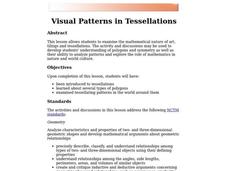


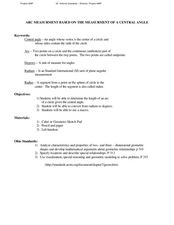





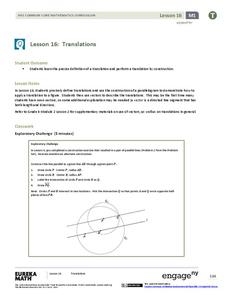



![Pbs Mathline Lesson: Geometry, It's a Perfect Fit [Pdf] Lesson Plan Pbs Mathline Lesson: Geometry, It's a Perfect Fit [Pdf] Lesson Plan](https://d15y2dacu3jp90.cloudfront.net/images/attachment_defaults/resource/large/FPO-knovation.png)
